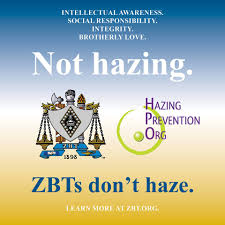
CW’s Female Problem
Three years ago, CBS announced they were creating a Greg Berlanti led Supergirl Show. I, among many others, were elated at the news. Still, many were unhappy that they chose Supergirl, throwing all manner of sexist insults at the show before it even had a teaser. I wrote a little op-ed about why we needed Supergirl, and I still stand by that op-ed (which ended up being almost 100% accurate, by the way). But after the first season of Supergirl, it was picked up by the CW to join the other Berlanti DC television series Arrow, Flash, and Legends of Tomorrow. I was worried, since that would lead to a smaller viewership, but it would also lead to more flexibility in the roles. Once going on the CW, Supergirl’s episodes became more culturally relevant, adding positive LGBT+ representation, as well as dealing with sensitive subjects like immigration and feminism. However, they also lost a few of their bigger name people. Calista Flockhart, who played Cat Grant in the show, was a powerhouse of feminism and female power. She returned for only a few episodes, as the CW couldn’t afford her as a series regular. Peter Facinelli, who portrayed Maxwell Lord, the series’ Lex Luthor stand-in, also was lost into the abyss, never even mentioned again.
However, this opened the door for some great female characters. We were introduced to Katie McGrath’s Lena Luthor, Lex Luthor’s adoptive sister, and throughout season two the audience was left guessing whether she would follow in her family’s footsteps or become an ally to Supergirl. We got to see Sharon Leal’s M’gann M’orzz, or Miss Martian. We got to see Dana Delaney’s Maggie Sawyer, love interest to Kara’s Sister, Alex. We even got some great villains along the way, too numerous to recount here.
Most of these characters were done well. They had fulfilling story arcs and felt like real characters. In the current season, we were introduced to Samantha Arias (Odette Annable), a seemingly original character. We are introduced to her separate from the main cast, and we see that she has just moved to National City for a new, high pressure job. She is a single mother and works very hard to take care of her daughter and deal with her high demand job. It is revealed in the season 3 premier that she had some sort of superpowers, and she spends the first half of the season exploring their lengths. We also learn after a few episodes that her new job is acting CEO of L Corp while Lena is acting CEO of Cat Co.
Samantha quickly becomes friends with Lena, Kara, and Alex. They have an amazing friendship that you just love to see portrayed on a television. Rarely ever talking about men – dealing with real life problems – open and accepting of each other’s differences, etc. Samantha is my favorite character on the show, because she seems like a real snapshot of a struggling mother thrust into a job she wasn’t really prepared for.
Before I continue with Samantha, I need to talk about the CW’s Flash. The character of Caitlin Snow, played by Danielle Panabaker, over the course of the previous two seasons, had become the villain Killer Frost. Up until this point, Caitlin was my favorite character. Caitlin’s story arc was characterized by struggle to control her negative emotions, and struggle to deal effectively with her feelings.

Caitlin was the good character that was always struggling. All her love interests ended up getting killed or being the villain in disguise. She had some pretty severe PTSD from all of her experiences. She struggled regularly. For whatever reasons, the showrunners decided to have that struggle overcome her. After a stupid time-changing plot point, Caitlin was losing control of her (new and unexplained) ice powers. She ended up joining with the season’s villain and turning on her team. In the end, she aided them, and went off to figure herself out.
At the start of the next season, Caitlin has regained herself, but whenever she is angry or scared, she can lose control and become Killer Frost. I mention this because both Caitlin and Samantha share a similar story arc, and a similar fate in the DC Television universe. For whatever reason, secondary female characters with powers become villains (or get killed off).

I don’t care if they become villains. What I care about it how and why. Caitlin is the perfect example of the kind, loving, sensitive woman who is also a bit of a badass. She ends up becoming a villain because of how good and kind she is. She becomes tired of being walked all over by everyone else. She wants to take control of her life. That’s a totally reasonable and something many women feel. However, most women do not become murderous ice queens when they reach this point. In fact, CW shows have men who experience similar struggle and end up becoming heroes who, surprisingly, do not struggle between good and evil (I’m looking at you Jimmy Olsen). Caitlin’s story arc seems to tell the viewers that those qualities are bad because they led her to become a villain. Either that they were bad qualities, or that they are too weak to cancel out her inherent badness. It’s a common trope in DC comics (and any comic, really) for a woman’s power’s to be triggered by her emotions, and to reflect her emotions. Presently in the show, Caitlin uses her ice powers for good, but she can still lose control as Killer Frost, as Killer Frost is actually a separate personality. There is even a scene in the four part crossover event, Crisis on Earth X, when Caitlin transforms and Killer Frost says something along the lines of “Where does she get this stuff?” or “I can’t believe she wears this.” I tried to find a clip, but I couldn’t. The point being, they are two completely different personalities. Which doesn’t really help the whole plight of women who are trying to prove that their emotions don’t turn them into irrational monsters.
This brings me back to Samantha. After Killer Frost, I was very jaded about how awesome Sam was, because as I saw her powers developing, I saw her mirroring Caitlin’s story arc. Overworked single mother with little support suddenly gains powers and becomes evil. It’s clockwork. I was waiting for that inevitable moment. I had hope that perhaps Samantha would be a counter to Caitlin – that she would actively chose to use her powers for good.
And while Samantha never descended into the depths of rage and fury, what happened to her was, if not worse, just as bad.
It was revealed in episode 7 that Samantha was a “Worldkiller” called Reign, which is one of Supergirl’s archenemies. This was a secret kept by the creators until then – nobody knew what Samantha’s purpose was. I was, needless to say, immediately disappointed. However, there was still hope. I hoped that, perhaps, Samantha’s strong ethics and well-developed character would have the will to overcome this revelation. The episode even ended on an unclear note. We were left waiting until the mid-season finale if she succumbed to her role or overcame it.

So now, instead of having a woman who succumbs to her weaknesses, we have a woman who becomes a monster and can’t do anything about it. She says she will fight it, but then is almost immediately overcome by it. When she learns she is Kryptonian, she wishes to become a hero like Supergirl. She is given no autonomy and no ability to control herself. Her entire characterization before this point now feels wasted. Why show her as such a strong, confident, kind woman if that is going to mean nothing? We see her give Supergirl a massive thrashing with none of Samantha’s actual character or personality.
I understand why the writers did this. It’s to create a sense of anticipation. Supergirl does not know that Reign is Samantha. Samantha doesn’t even know that she is Reign. I am assuming the idea is that their friendship will overcome Reign, but I am sort of tired of this trope. Why are none of these women strong enough to overcome this wickedness to begin with? Why can’t these women control themselves?
The fans are also an important element. Many fans were more than elated when Caitlin finally became Killer Frost (as her character in the comics is, in one iteration, Killer Frost). Many of these people were the ones who identified with Caitlin strongly, and wanted to see her take control of her life. This is not a fault on them. It’s also just a matter of just pleasing the fans. However, they could have empowered Caitlin in a way that didn’t immediately destroy all her previous characterization, or send a message that her qualities were not valuable. In any Comic Book iteration, there is a delicate balancing act between the source material and what makes sense for the show. The show tries to frame Caitlin’s transformation as somehow empowering, but it really just says that smart, kind, talented women are not valuable unless they can duke it out with the boys in the same way.
I have such an issue with this because of the way it represents women overall. Women are constantly trying to convince men that they are not made into irrational ice queens by their emotions. They are constantly trying to prove to men that they are not easily manipulated. They are trying to prove to men that they do not become irrational and emotional in positions of power. These stories actively fight against those ideals.
I’m tried of watching strong women fail. Society tries to convince women that no mater how strong they are, they will not do what they want. They will not control their emotions, they will not be successful, they will not resolve their inner turmoil. Why can we not see a strong woman who is being forced to be a “worldkiller” successfully say no? Why does a woman have to have some personal stake in something before she can get control? Making only once character capable of doing this while all others are failing is not hopeful.
What would have been better is if Samantha struggled against Reign, and then used Supergirl’s inspiration (a common theme of the show) to overcome Reign’s control. That would honestly be more entertaining that watching them fight for two minutes. There would be much more character and plot development if they did that. I’m not asking for much, I’m just asking for female characters who are good and strong to remain that way and don’t abandon hours of character development for the sake of shock.











